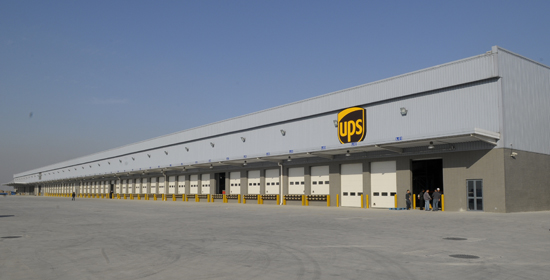No products in the cart.
Brown goes green: UPS announces ambitious sustainability goals
UPS announced ambitious new sustainability goals today, including a 12 percent reduction of its absolute greenhouse gas (GHG) emissions from global ground operations by 2025. That’s despite the fact that the Atlanta-based integrator expects its volumes to rise concurrently.
“Because of our size and scale, we know our commitments can shape markets, advance technologies and be a catalyst for infrastructure investments,” said David Abney, UPS chairman and CEO. “We rely on the ingenuity of our employees, suppliers and technology partners to help us reach goals that will transform the shipping industry and spur innovation.”
At the core of UPS’ environmental goals is a transition from fossil fuels to electric power. UPS hopes to see 25 percent of the electricity it consumes come from renewable energy sources by 2025. In 2016, that share was 0.2 percent. In addition, one in four new vehicles purchased annually will be an alternative-fuel or advanced-technology vehicle by 2020, up from 16 percent in 2016.
The company also announced plans to increase its use of alternative fuels from its 2016 rate of 19.6 percent to 40 percent by 2025.

UPS said that it will grow the number of vehicles and facilities powered by sustainable energy sources, including on-site solar, off-site wind, and renewable natural gas, hydrogen and biodiesel. The company has tested renewable fuel across its global network for some time now, and said it plans to scale up these programs company-wide.
Of course, airfreight is the elephant in the room. According to calculations by Lufthansa, the average modern ocean vessel usually emits between 10 and 40 grams of CO2 to move one tonne of freight one kilometer. For railhaul, the emissions are 30 to 100 grams per tonne-kilometer, and 60 to 150 grams for today’s trucks. Airfreight, however, racks up more than 500 grams of CO2 emissions per tonne-kilometer – and that’s just for today’s most clean-burning engines.
So far, environmental commitments across the logistics industry have lagged in regard to aircraft emissions, but UPS says its latest pledge will tackle the problem head on.
The pledge addresses three strategic areas: aircraft fleet, aircraft weight and aviation procedures. In 2016, UPS ordered 14 new 747-8 freighters, with an option to purchase 14 more. UPS says that the new aircraft produce 16 percent fewer pollutants than the 747-400Fs that they are replacing. UPS is also launching a fuel management software solution that provides enhanced analytics and visibility of fuel consumption.
UPS Airlines recently implemented a new takeoff and landing performance system on all UPS aircraft. The new on-board system “automates takeoff and landing performance calculations for the entire aircraft fleet,” which UPS said makes flying safer and more efficient. “This real-time takeoff and landing data helps make the best and safest decisions during takeoffs and landings,” the company’s sustainability report said.
The software increases efficiency through reductions in takeoff flap settings and optimized thrust required for takeoff. UPS Airlines said that the new software has improved takeoff climb performance, reduced noise pollution and saved upwards of 1 million gallons of fuel annually. Going paperless has also eliminated approximately 3 million pages of paper each year.
While the company’s latest environmental goals are apolitical, UPS has joined a growing list of U.S. companies that are owning the externalities of their operations. Other companies, such as Exxon Mobile and Unilever are explicitly calling for a return to the environmental standards enforced by the Paris Agreement, which the U.S. recently abandoned. Logistics is a notoriously polluting business. As e-commerce drives up demand for its services, the announcement by UPS is a recognition that growth needn’t necessitate more pollution.

















